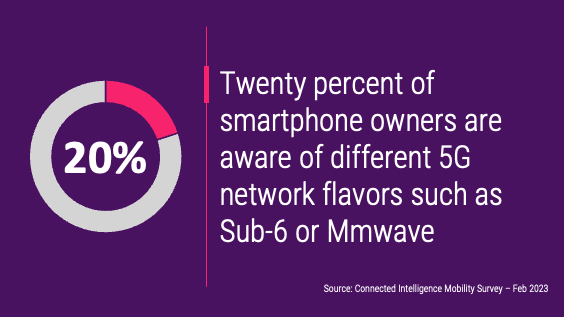
The Pixel Fold officially debuts
Last week we reported on Google’s “official” leak of its much-anticipated Pixel Fold smartphone prior to the Google IO event and provided our pre-debut commentary based on the leaked images and the rumored information on specs and pricing. The rumors were correct for the most part (a 7.69-inch main fold display with a 5.79-inch outer display and a 50-megapixel camera), but there was a sticker shock for those hoping to see the new Pixel Fold undercut rival Samsung’s Galaxy Z Fold 4 pricing. The new Pixel Fold has been available for pre-orders beginning May 10 and carries a $1799 price tag matching that of the Galaxy Z Fold 4. Customers pre-ordering the phone will be offered a free Pixel Watch, which retails for $349. Google also offers Pixel Fold buyers the 2TB Google One cloud storage plan for six months and a three-month subscription to YouTube Premium. Incidentally, Google also released the new Pixel 7a, the upgrade to its popular mid-tier Pixel 6a phone. The new Pixel 7a will retail for $499, and customers are offered a free Pixel Buds A-Series headset and an exclusive carry case.
The Circana Take:
- The new Pixel Fold has form factor advantages over its main rival Galaxy Z Fold series as its wide form factor and aspect ratio is much more ideal for content consumption. On the other hand, the Galaxy Z Fold runs on the market’s top-notch silicon (Qualcomm’s latest Snapdragon 8 Gen series), while the Pixel Fold’s home-brewed Tensor silicon has yet to prove itself considering the performance issues seen on many Pixel 6 and 7 series phones.
- As we noted in our pre-release commentary last week, the pricing of the Pixel Fold would be an important criterion for success. At $1800, it is unlikely to enjoy high adoption numbers unless carriers are generous with their subsidies. Nevertheless, the free Pixel Watch offer is an attractive bundle to lure potential customers.
- Google talked little about its plans around addressing consumers’ concerns on the new Fold’s durability. The Pixel Fold will likely not deal with the same challenges Samsung had in its first two iterations of the Galaxy Fold, but the fragile nature of the foldable form factor is an important demotivator (according to the Circana Connected Intelligence Mobility survey, 30% of smartphone owners show no interest in foldables due to durability concerns), and consumers need additional assurances (such as Samsung’s $149 Screen Repair Price Offer) for such an expensive investment.
Verizon rate plans go a la cart.
Verizon has launched a new approach to wireless, simplifying its base wireless plans from six to two and, more importantly, attempting to become the center of the services ecosystem. The new plan – myPlan – is aimed at giving the customer control and flexibility, according to Sowmyanarayan Sampath, CEO of Verizon’s Consumer Group, and is, in many ways, an extension of the existing +play solution.
The foundational wireless offering is either Unlimited Welcome, or Unlimited Plus, with the latter including ultrawideband 5G as well as 30 GB of mobile hotspot data. Then, the customer can choose “perks” at $10 per perk. These include options such as a Disney bundle (Disney+, Hulu and ESPN), Walmart + Membership, Apple One and other options. All are carefully positions to provide a discount compared to purchasing the services from other sources (Disney is $4.99 cheaper, Apple One is a $6.95 saving per month). Incidentally, perks can be swapped in and out at will.
The Circana Take:
- While the new plan offering provides some clear flexibility and freedom of choice, there will be inevitable comparisons against T-Mobile, which offers Netflix or Amazon Prime for free in the standard plans. Indeed, Verizon used to offer the Disney+ service in a standard plan bundle (for a limited time) too. As such, some competitors could position Verizon’s new service as charging for what used to be included for free.
- Verizon is still trying to differentiate wireless plan pricing based on speed. The carrier was early to try and differentiate 5G pricing from LTE, and the new plan suggests paying a premium for Ultra-wideband. It should be noted that only 20% of smartphone owners cite awareness of different 5G network flavors such as Sub-6 or MMwave (Ultra-wideband). Further, this plan comes with 30 GB of mobile hotspot, but consumers can purchase the hotspot perk (100 GB of data) for $10. We get it: the carrier needs to recoup the vast investment in spectrum and network build, but if the other carriers do not follow along, Verizon’s pricing will be uncompetitive.
- On the positive side, all of the perks offer a discount compared to standalone pricing. Further, while there are just nine perks to start with, there is clearly going to be a strong push to add additional perks. Expect to see an ongoing barrage of additional services (Netflix, Amazon Prime and so on) being added, which will further strengthen the solution. And in the meantime, the +play perk offers a $15 +play option (such as Netflix) for the price of $10.
- The ultimate goal here is to control the services ecosystem (as much as any individual company can). That is a strong move (if Verizon can further strengthen the content library via additional perks) as it makes leaving Verizon harder, while also providing a clear path to consumer savings by bundling all content under the solution. Additionally, the fact that the perks can be added or dropped quickly and easily is hugely appealing to consumers who balance TV streaming services, keeping only the services they are currently using.


